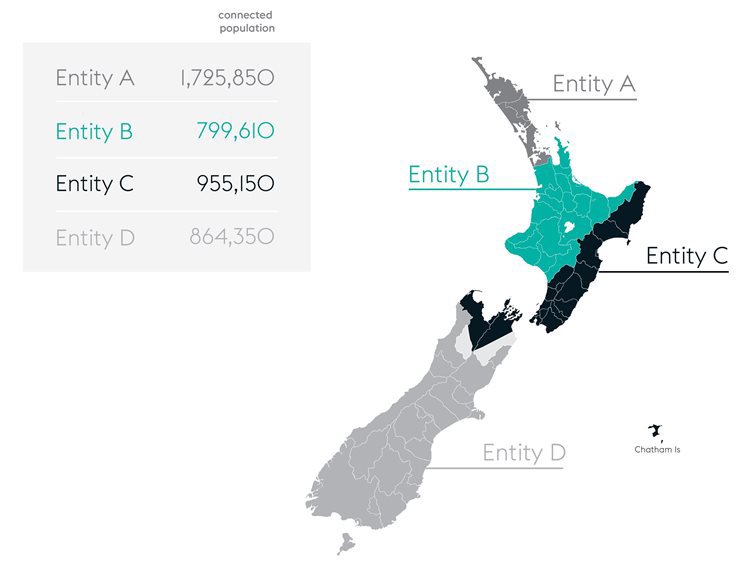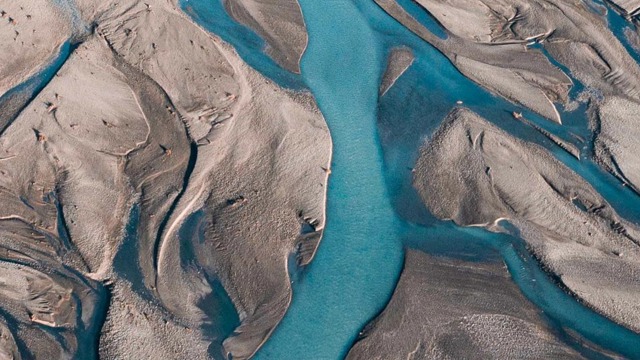Today, Local Government Minister Hon Nanaia Mahuta announced further details of the Government's full-scale regulatory and structural reform of water service delivery in New Zealand. The Government has proposed the boundaries for four publicly-owned water entities, to replace the existing 67, based on scale and population size.
The proposed entities will cover:
- Auckland and Northland;
- Central North Island including Taranaki;
- East Coast North Island, including the top of the South Island; and
- the remainder of the South Island.
The new entities will be run by boards appointed with input from councils and with expertise in water infrastructure. Economic analysis, informed by international evidence, suggests that each entity needs to serve a connected population of at least 600,000 to 800,000 to achieve the desired level of scale.
Proposed boundaries of new entities

A range of factors were analysed to help determine how many entities there should be, and their boundaries, including:
-
Potential to achieve scale benefits from a larger water service delivery entity to a broader population/customer base.
-
Alignment of geographical boundaries to encompass natural communities of interest, belonging and identity including rohe/takiwā.
-
Relationship with relevant regulatory boundaries including to enable water to be managed from source to the sea - ki uta ki tai.
The latest estimates indicate that investment in the order of $120 billion to $185 billion is required over the next 30-40 years to replace and refurbish existing water infrastructure, provide for future population growth; and upgrade three waters assets to meet drinking water and environmental standards.
Councils currently own their own pipes and water providers and will have to merge these into the new water entities if they choose to be included in the reforms. Councils still have the option to opt out of the reforms, and recent comments from Whangarei District Council and the Mayor of Auckland suggest that some Councils are considering that. The Government will release more data to encourage councils to join next month.
Final decisions on the boundaries of the new water entities are expected in September (and are not linked to Councils' decisions on whether to opt in or out of the reforms).
We have the expertise to guide our clients through the legal, regulatory and political challenges of New Zealand’s changing water landscape, so please get in touch with one of our Three Waters experts below if you would like to discuss how these changes may impact you and your organisation.



